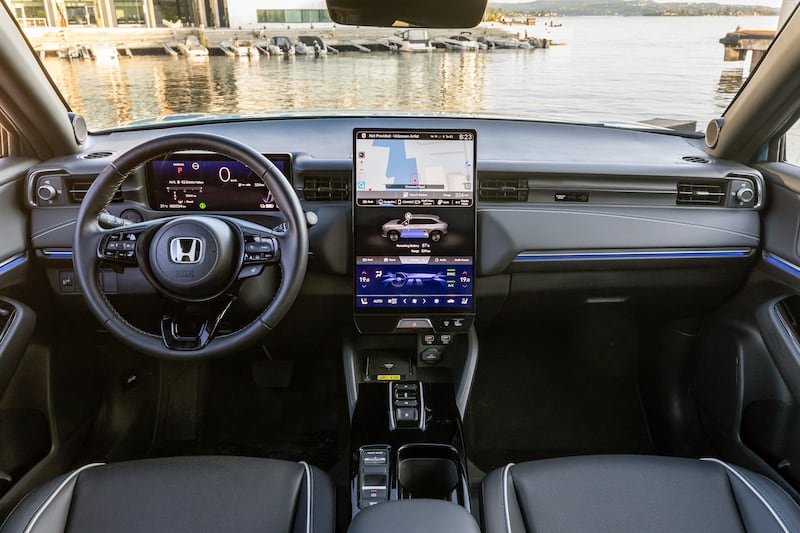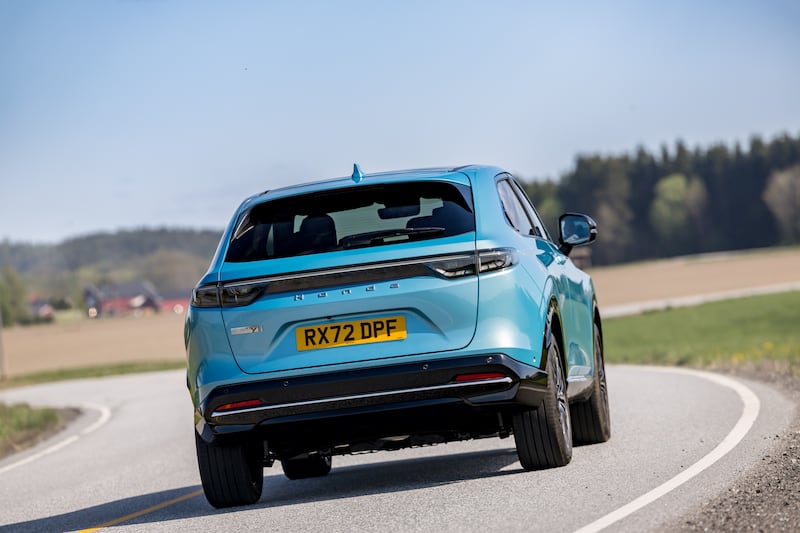Remember Honda? Those of us from a certain vintage recall how this Japanese brand was rubbing shoulders with the Germans in the premium classes, dominating Grand Prix and running some of the best TV ads.
Now it seems that while the brand remains a force in the US and Asian markets, in Europe it has been parked in the lay-by.
You can understand the thinking of the Japanese executives: the European market is cut-throat, riddled with increasingly complex regulations and for a long time demanding diesel engines that no other markets used. All that demanded massive investment for limited return.
Much easier to sell to the Americans, where the quality gap between well-built Japanese cars and the home-produced models was greater.
RM Block
The end result for Irish buyers is that the brand is being outsold by Porsche, Fiat and Polestar this year. It has four models on the market, the best-seller being the Jazz supermini. Limited supply of the new Civic – along with a relatively high price point – has left it with 56 new registrations of the model this year.
Even the long-awaited all-electric Honda E city car hasn’t sparked a great deal of interest, due to a mix of its limited range of up to 222km and €30,000 price tag.
So can the arrival of a new all-electric crossover, the e:Ny1 boasting a range of 410km, finally revive the fortunes of what remains a brand with proven engineering prowess?

First impressions are of a car that’s playing it safe, both in terms of styling and performance. The name is arguably the most unique feature of this car.
The front nose styling is more impressive in the metal than in photos, and the car is more substantial as well, similar to the HRV, from which it derives its looks. Honda is also quick to underline that the e:Ny1 is built on a new dedicated EV platform, while the interior has also been overhauled.
First to that interior. While it’s dominated by a 15.1-inch centre screen, this is divided into three and it is really only the top third – of five inches – that you will engage with. The middle part is for information apps like power supply data, while the lowest part is permanently fixed on air-con controls.
The interior trim has elements of soft touch faux leather but for the most part is hard plastic reminiscent of Japanese cars from previous decades. That is combined with the piano black shiny plastic that has spread through the car industry like Japanese knotweed.

Overall, the cabin is comfortable, but the rear seats are really for two grown passengers rather than three, as the centre seat is high, hard and narrow.
Honda’s designers could have had a lot more fun with this interior, taking its cue from the quirky Honda E, for example. It should be using the cabin to showcase its Japanese heritage and the attention to detail for which that country’s craftworkers are famous.
[ Updated MG 5 estate remains practical but flawedOpens in new window ]
Back on the exterior, the recharging point is on the car’s front nose. There’s a smart light bar across the front that signals when charging is under way and when the battery is full. However, although the door for the socket opens on a button, it must be closed manually. We struggled to get the latch to catch without a couple of attempts. For a company with Honda’s engineering pedigree it seems a bit of a letdown.

Round the back, the use of high-gloss plastic mouldings may look nice now but leaves you wondering what they will be like after a few scratches or simple wear and tear.
Honda’s engineering prowess is evident in the way the car handles, which is admirably responsive in its steering and the damping copes well with uneven surfaces. There is little bodyroll from the e:Ny1 either, so it can weave through the bends without having to reduce speed.
As mentioned already, Honda claims a range of 410km from its 62kW of usable battery pack, which pits it in the middle rankings against its rivals. By the time we had clocked up 100km the car estimated our remaining range at 289km, but the on-board computer reckoned we could have garnered 31km if we turned the air-con off. Was it worth the sweaty effort? Probably not.
Over a mix of motorway, city and rural roads we managed to average 17 kWh/100km, which is what you might expect from a car this size, but when we started out in town that average was closer to 20kWh/100km. When motorists get over the range issue, it’s this efficiency figure over 100km that will start to be the gauge of a car’s economy, just as mpg used to be.
The e:Ny1′s battery takes a maximum DC charge at a rate of 78kW, which seems slower than its Korean rivals, but Honda engineers are quick to point out that slower steadier charge is much better for the battery, while those that claim higher maximum rates do so for only a limited amount of the charging time.
We have no prices as yet for the e:Ny1 when it lands in Ireland, but a good guess would be that it will be north of €50,000. That would pitch it up against some strong EV sellers and premium players.
The thing with Hondas is that the people we know who own them, love them. They rave about their reliability. But they’ve been starved of a well-priced model range for years. That has led its loyal customer base to look elsewhere. The oddly named e:Ny1 has a lot of work to do to win back Honda’s fanbase.



















